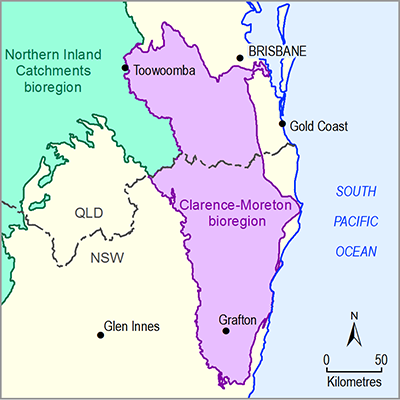Breadcrumb
- Home
- Assessments
- Bioregional Assessment Program
- Clarence-Moreton bioregion
- 2.1-2.2 Data analysis for the Clarence-Moreton bioregion
- 2.1.2 Geology
- 2.1.2.3 Statistical analysis and interpolation
- 2.1.2.3.1 Three-dimensional geological model workflow
Page 22 of 77
This section briefly describes the workflow used to develop the three-dimensional geological models of the subsurface stratigraphic architecture of the Clarence-Moreton bioregion. The models were developed using SKUA® three-dimensional geological modelling software (Paradigm Geophysical Pty Ltd, version 14.1).
Last updated:
8 January 2018

Summary and download
Product Finalisation date
2016
PRODUCT CONTENTS
- 2.1.1 Geography
- 2.1.2 Geology
- 2.1.2.1 Methods
- 2.1.2.2 Observed data
- 2.1.2.3 Statistical analysis and interpolation
- 2.1.2.3.1 Three-dimensional geological model workflow
- 2.1.2.3.2 Definition of the stratigraphic column
- 2.1.2.3.3 Selection of input datasets
- 2.1.2.3.4 Representation of structural elements in the three-dimensional geological model
- 2.1.2.3.5 Characterisation of binding horizons of shallow aquifers (alluvium and basalt)
- 2.1.2.3.6 Characterisation of the bedrock stratigraphic units in the Clarence-Moreton bioregion
- 2.1.2.3.7 Isopach maps, depth to formation top and depth to base of formation
- 2.1.2.4 Gaps
- References
- Datasets
- 2.1.3 Hydrogeology and groundwater quality
- 2.1.4 Surface water hydrology and water quality
- 2.1.5 Surface water – groundwater interactions
- 2.1.6 Water management for coal resource developments
- Glossary
- Citation
- Acknowledgements
- Contributors to the Technical Programme
- About this technical product
ASSESSMENT
ASSESSMENT COMPONENT
